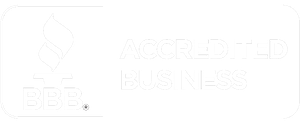With more than 20 years in the industry, our comprehensive settlement planning team has cleared up many misconceptions about the planning process. Some misunderstandings involve who can and can’t (or should and shouldn’t) plan for settlement. Others dismiss settlement planning tools that could actually be very valuable. Adequate planning can mean the difference between burning through a settlement too fast and having lifelong security. Below, we clarify three myths that plaintiffs and attorneys might have heard.
Myth: Your client must receive a large settlement amount for settlement planning to be utilized.
Reality: A client does not need to receive millions in order to utilize and benefit from settlement planning. Even clients receiving tens of thousands can plan for their futures by placing their monies into an investment-backed structure. Clients receiving less than $100,000 might be able to engage in spend-downs, depending on whether they receive needs-based benefits. Or, a pooled trust might be a good option.
These various options pertain to clients receiving smaller amounts of money as well as clients receiving benefits they do not wish to lose. Careful and specialized settlement planning options allow for plaintiffs to protect their income while arranging for the future.
Myth: Settlement planning is only for plaintiffs.
Reality: Plaintiffs’ attorneys may also engage in settlement planning via attorney fee deferral. When a case settles, attorneys may defer their fees from the case in order to avoid a large tax hit while simultaneously creating a customized payout schedule. By deferring fees from a settlement, attorneys can design a periodic payment schedule where they can receive monthly, annual, or lump-sum payments down the road. This also helps them avoid a jump to a higher tax bracket, providing a sense of relief as attorneys need only to pay taxes on disbursements they choose to take during each calendar year. This way, a fee can be spread out over time to assist with tax planning as well as personal and financial planning.
Myth: Qualified settlement funds are an unnecessary planning tool.
Reality: Qualified settlement funds (QSFs) are one of the best vehicles available with regard to the receipt of settlement planning monies. Defendants in a case can pay an entire gross settlement amount into a QSF, removing the defendant from the equation and allowing for plaintiffs and their attorneys to take much-needed time for decision-making. With monies placed directly from defendants into the account, there is no constructive receipt, and plaintiffs can decide how they would like their settlement monies allocated: a partial amount in up-front cash, a portion placed into a structure, some placed into a wealth management account, etc. Attorneys may also take time to decide on fee deferral while the money sits in the designated QSF, allowing for careful planning and informed decision-making by all parties.
Our team at Milestone has guided thousands of attorneys and their clients through the settlement process. We take the time to understand the complexities of each case, assess the best outcomes, and find the paths that allow plaintiffs to manage their future needs. Contact us to discuss how we can help you.


